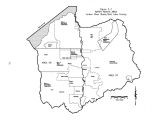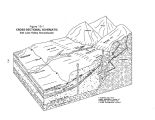| OCR Text |
Show flood insurance through private companies at reduced rates. 13.7.3 Watershed Protection Prevention is usually more cost- effective than damage repair and mitigation. Flooding can be significantly reduced by maintaining and protecting watershed vegetation and/ or by building watershed flood storage. The Soil Conservation Commission, in conjunction with the Natural Resources Conservation Service and the Salt Lake Soil Conservation District, should continue its practice of re- evaluating the potential for small watershed projects in the Jordan River Basin. Wildfires during dry summer months can significantly damage vegetation and greatly increase the potential for high runoff and debris flows. The occurrence of wildfire disasters should be quickly followed by efforts to mitigate against the increased flooding potential. 13.7.4 Flood Control Structures The flow of the main stem of the Jordan River is controlled by releases from Utah Lake. Reservoirs above Utah Lake provide additional controls. Consequently, the potential for flooding along the main stem of the Jordan River is very low. The tributary streams of the Jordan River, however, have few controls. Parley's Creek has flood storage capacity in Mountain Dell and Little Dell reservoirs. Red Butte Reservoir, although currently being considered for removal, still offers limited flood storage capacity on Red Butte Creek. Big and Little Cottonwood canyons and Bells Canyon have a number of small ponds. But these are, for the most part, quite high in their respective drainages and relatively small, rendering them rather ineffective as flood control structures. The county has routed several streams through retention basins such as the one in Sugarhouse Park on Parley's Creek and the one in Liberty Park where the flows from Parley's Creek, Emigration Creek, and Red Butte Creek come together. These retention basins are designed to attenuate the floods so that downstream pipes can adequately handle the outflows. The same approach is taken throughout the valley with numerous retention basins built to attenuate storm runoff from new commercial and residential developments. Many of these retention basins have been put to dual use being lined with grass and used regularly as parks and playground areas. This approach has worked well for the county and undoubtedly will continue to be the planning approach for future developments. Since the flooding of 1983, the county has also built mud and debris flow basins at the mouths of several canyons. 13.7.5 Improved Stream Channel Capacity In the past, improving stream channel capacity has meant channel widening, straightening, dredging and/ or concrete or riprap lining. Today's more environmentally sensitive society, however, requires that flood control planning be only part of a more holistic approach to stream management. Flood courses are seen by many as valuable riparian areas and corridors of wildlife habitat within the increasingly developed urban areas. Consequently, increasing stream channel capacity must be accomplished in a way that is sensitive to these other interests. Due to relatively high sediment loads, slow velocities and raw stream banks, the lower Jordan River ( below 2100 South) has required almost continual dredging to maintain flow capacity. If sediment loads cannot be controlled, then maintaining the flow capacity of this portion of the Jordan River will most likely mean continued dredging of the channel. At the current time, however, there are plans to spend a considerable amount of money as a part of the Central Utah Project wildlife mitigation efforts to rehabilitate the Jordan River. The habitat improvement and channel capacity issues need to be planned for in a cooperative way so as not to be counterproductive. 13.7.6 Jordan River Meander Corridor Salt Lake County passed an ordinance in 1994 establishing a Jordan River Meander Corridor. The ordinance defined the boundaries of the Jordan River's natural meander pattern, and set limits on the types of development and land uses that can occur within the designated corridor. This effort follows closely on the heels of the county's Jordan River Stability Study, published in December 1992. That study defined the Jordan River as ". . . continually undergoing the processes of bank erosion, long- term channel bed degradation, bridge scour, sediment deposition and meander migration." The river's flood potential is directly related to the natural erosion and sedimentation processes as a part of the river's natural 13- 5 |

















































































































































































